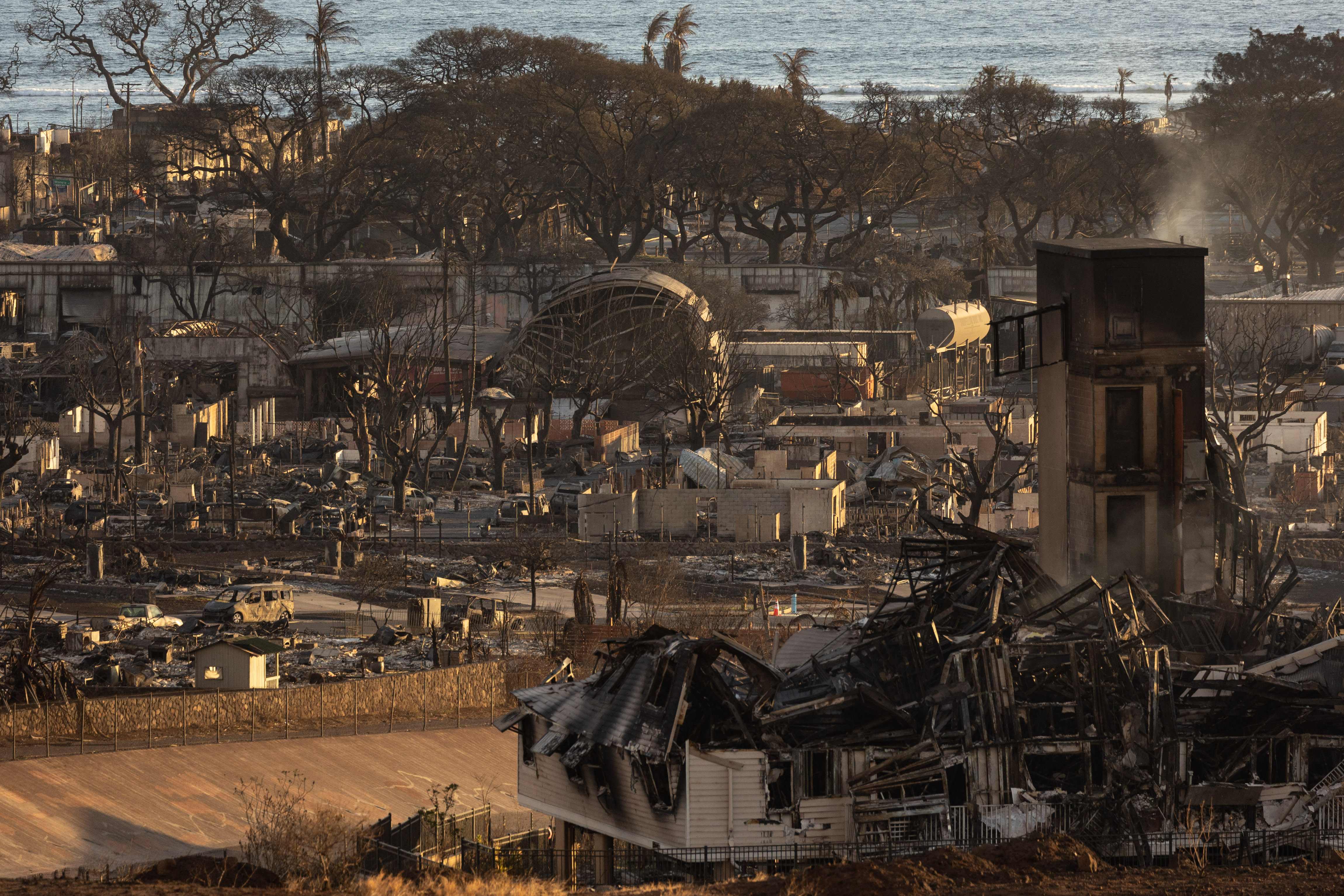Hawaii fires become deadliest in modern US history as ‘grim’ search for victims continues
Hawaii governor warns of ‘fire hurricanes’ in age of climate change as questions raised about warning system
Your support helps us to tell the story
From reproductive rights to climate change to Big Tech, The Independent is on the ground when the story is developing. Whether it's investigating the financials of Elon Musk's pro-Trump PAC or producing our latest documentary, 'The A Word', which shines a light on the American women fighting for reproductive rights, we know how important it is to parse out the facts from the messaging.
At such a critical moment in US history, we need reporters on the ground. Your donation allows us to keep sending journalists to speak to both sides of the story.
The Independent is trusted by Americans across the entire political spectrum. And unlike many other quality news outlets, we choose not to lock Americans out of our reporting and analysis with paywalls. We believe quality journalism should be available to everyone, paid for by those who can afford it.
Your support makes all the difference.Hawaii Governor Josh Green gave a stark warning to the world in the aftermath of the “fire hurricane” that destroyed the historic town of Lahaina on the island of Maui.
The state’s drought conditions from climate change and difficulties with water management had combined with 60mph winds from Hurricane Dora which had just passed the island, Mr Green explained in an interview on MSNBC on Sunday.
This allowed three of four fires to seed quickly in the wind and then move at a mile-per-minute through the community obliterating everything in its path.
“That’s what a fire hurricane is going to look [like] in the era of global warming,” he warned, emphasising the need for action on climate change.
The death toll stands at 93 confirmed fatalities and is expected to rise further in what the governor described as a “war zone” and the “worst natural disaster that Hawaii ever faced”. It is already the deadliest wildfire in modern US history.
Firefighters continue to battle flare-ups as much of the town remains sealed off. Crews with cadaver-sniffing dogs have covered just three per cent of the search area, Maui Police Chief John Pelletier said on Saturday.
It was “too grim” of a scene in Lahaina after the natural disaster struck, Mr Green told MSNBC’s Jonathan Capehart on Sunday.
“When we tried to lift and embrace those that we’ve lost, there’s nothing there practically,” he said. The state of the bodies could complicate identification efforts, with only two victims identified as of Saturday, Maui County officials said.
A final death toll won’t be known for some time, but it has already surpassed that of the 2018 Camp fire in California that destroyed the town of Paradise, killing 85 people. The highest number of fatalities from a wildfire remains the 1918 Cloquet fire in Minnesota and Wisconsin which took 453 lives according to the National Fire Protection Association.
Hawaii’s worst natural disaster on record before this week’s fire was in 1960 — just a year after it became a US state — when a tsunami killed 61 people.
The communications chaos that gripped the historic town of Lahaina as flames approached left hundreds of people unaccounted for, though with the disruption in communications and the number of tourists who were in the area, it is too soon to connect the number missing with potential deaths.

So far, at least 2,200 buildings are listed as damaged or destroyed in West Maui, of which 86 per cent were residential. Total damage across the island from the multiple fires that sprung up is initially estimated at close to $6bn.
The state’s emergency notification system will be under intense scrutiny after some residents questioned whether more could have been done to warn them before the fire overtook their homes. Some were forced to wade into the Pacific Ocean to escape.
Sirens stationed around the island — intended to warn of impending natural disasters — never sounded, and widespread power and cellular outages hampered other forms of alerts.
“We’ll know soon whether or not they did enough to get those sirens going,” the governor said on Sunday.
The state’s attorney general, Anne Lopez, said she was launching a review of the decision-making before and during the fire.
President Joe Biden briefly responded to a shouted question from a reporter on Sunday morning concerning whether he would be visiting the site of the wildfire disaster in Maui.
While out cycling with First Lady Jill Biden near their home at Rehoboth Beach, Delaware, Mr Biden did not stop but replied: “We’re looking at it.”
While it is expected of presidents to visit the sites of calamities, both manmade and natural, the logistics involved are difficult given the strain on those localities impacted in the days after a disaster. There is also the added logistical issue that Maui is a 10-hour flight from Washington DC.
Mr Green had nothing but praise for the president’s response to the fire, declaring a major disaster in the aftermath and mobilising federal agencies to help with relief efforts.
FEMA Director Deanne Criswell said the agency had 150 people on the ground, with additional search teams and dogs arriving within a day or two.
In the latest update from the County of Maui, firefighting crews are reportedly continuing to extinguish flare-ups in the Lahaina and Upcountry Maui fires.
Officials have secured 1,000 hotel rooms for people who lost their homes and are arranging for rental properties to serve as housing at no cost to families. More than 1,400 people have been taken in at emergency shelters.
Shelters and food and water distribution points continue to operate across the area and Wi-Fi and trucks and charging stations have been deployed to help improve communications and to reunite those separated in the chaos.







Join our commenting forum
Join thought-provoking conversations, follow other Independent readers and see their replies
Comments